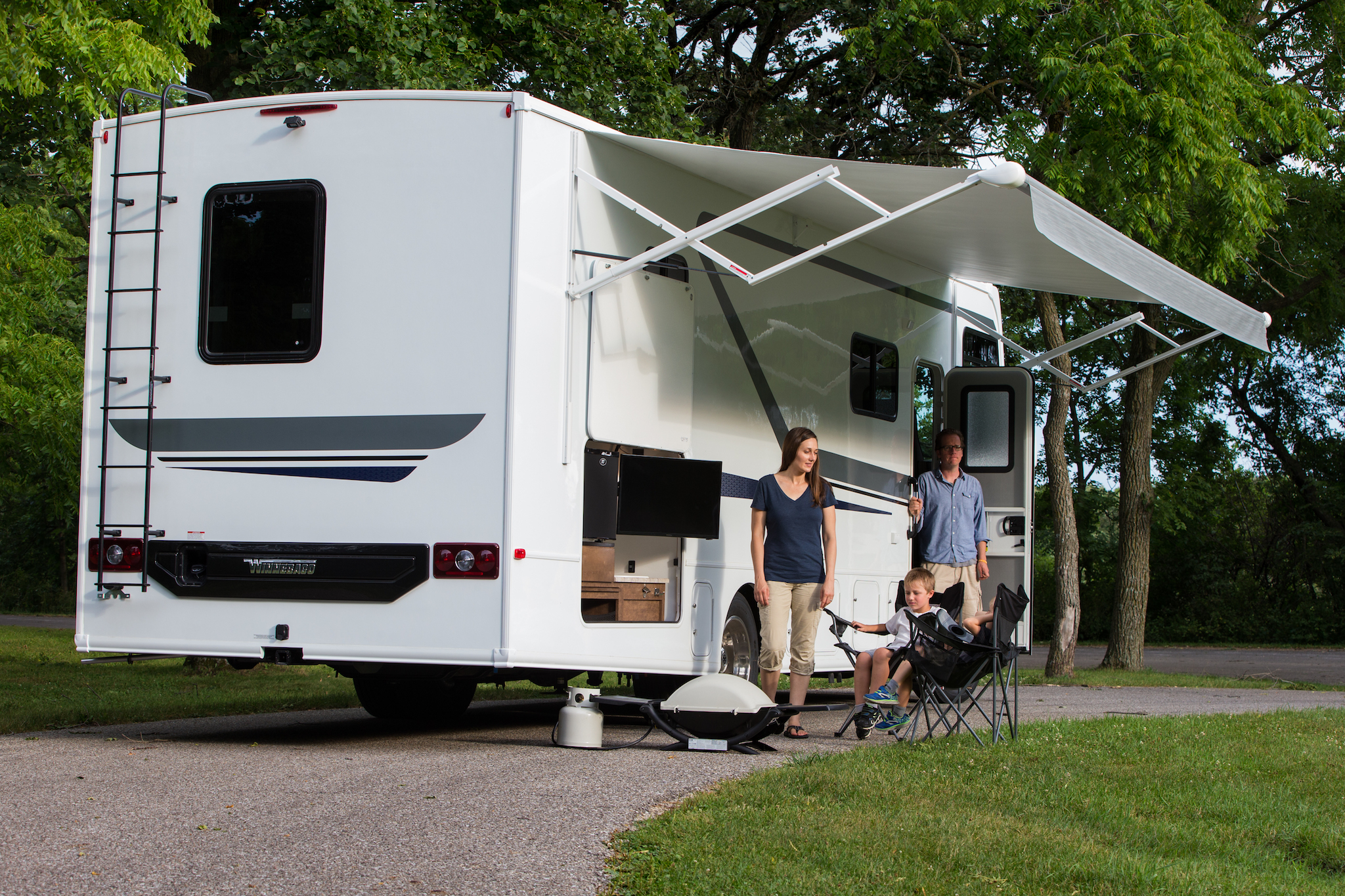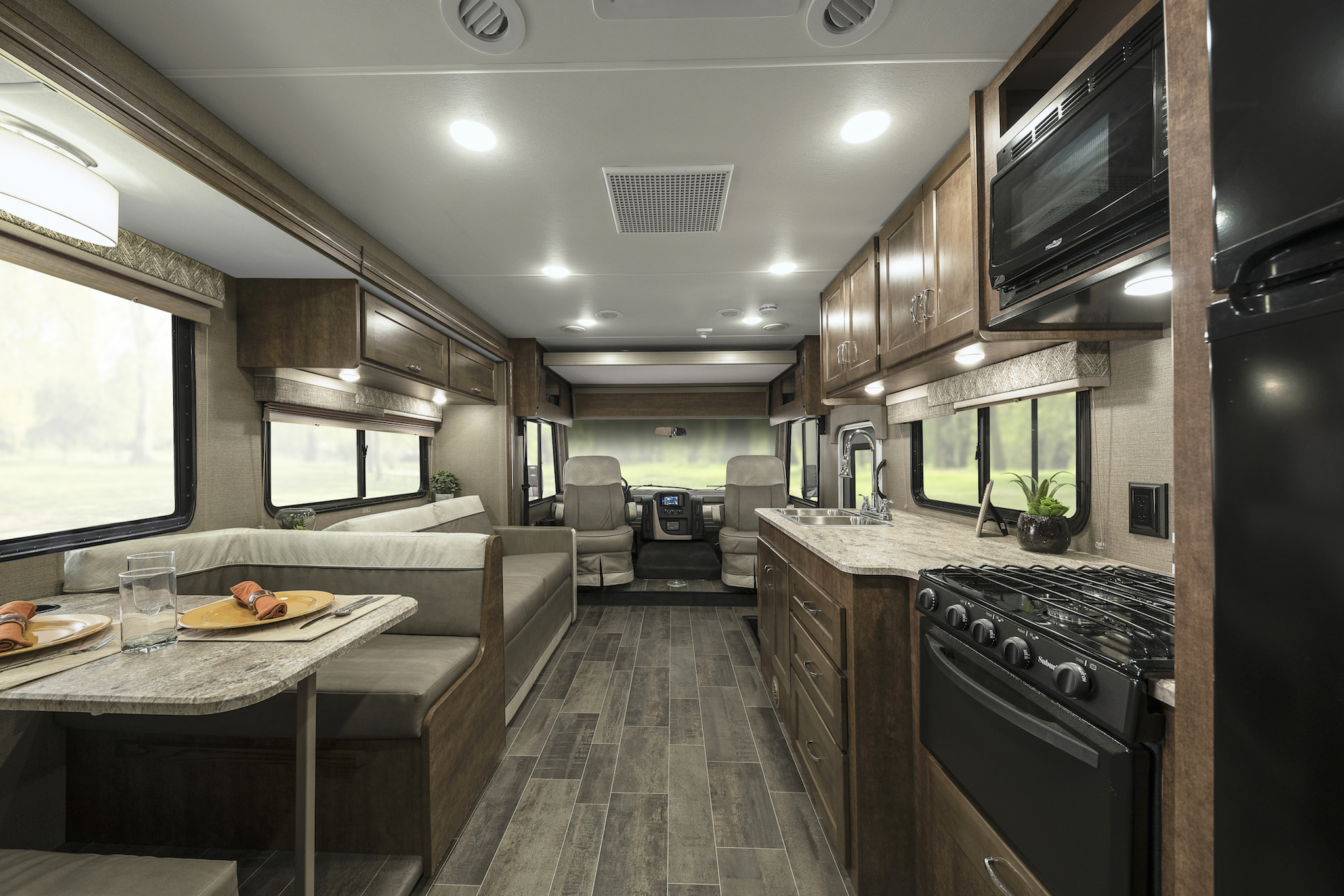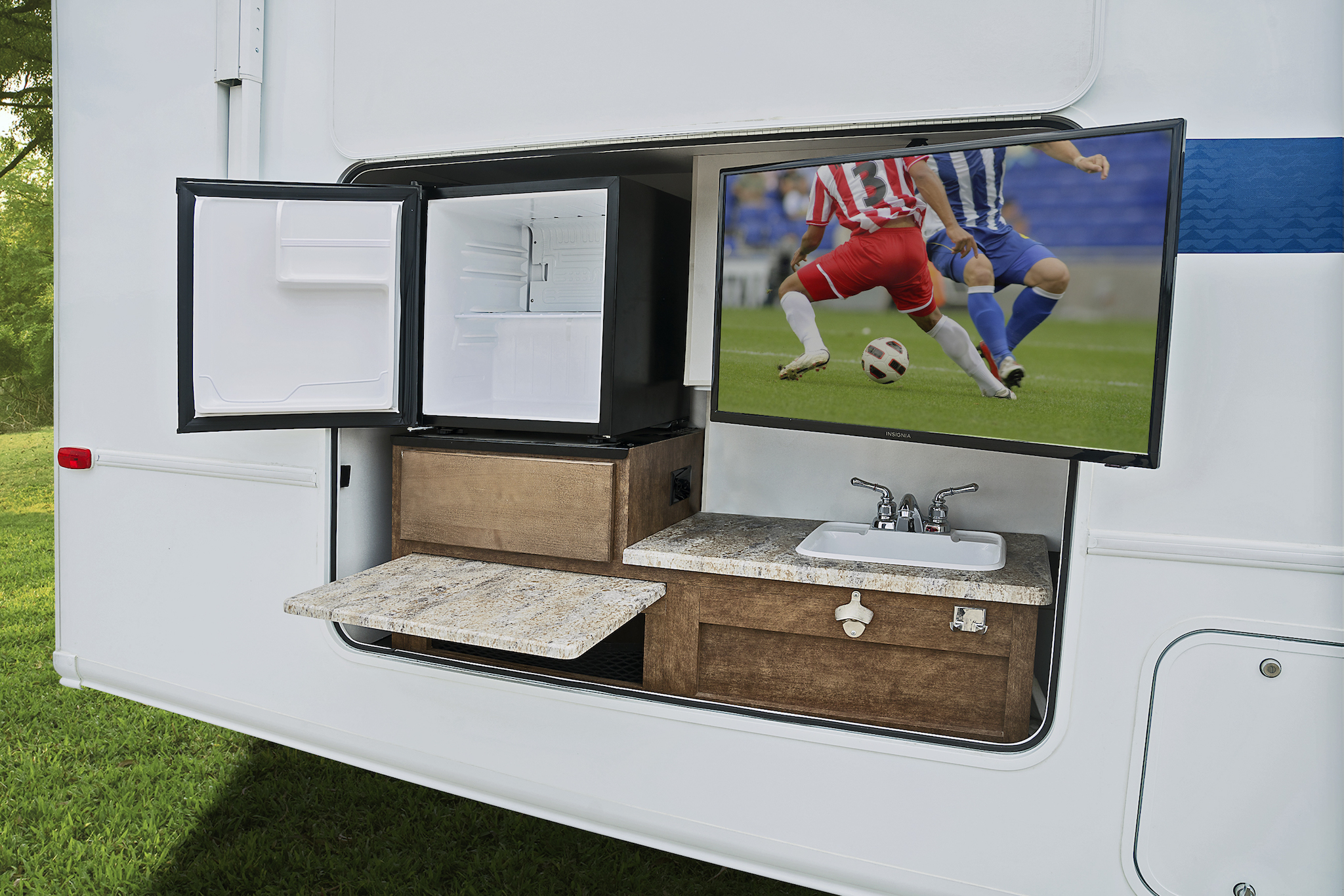
First Look: The Intent
When I first heard about the notion of Winnebago developing a new entry-level Class A motorhome a while back, my first reaction was, "Oh no. A race to the bottom." With the propulsive growth of RV sales for the past five years, other manufacturers wanted to broaden the base of buyers by bringing even lower-priced motorhomes to the market. For a long time Winnebago's popular Vista line met that demand.
For all the behind the scenes tours I've had at the company's sprawling Forest City plant, I have learned that this is a company that doesn't cut corners. In other businesses, when people use the term "value engineering" it's often code for "cheaper materials." And, for a moment or two there was a thought of switching to cheaper materials and eliminating the steel cage construction that's been a hallmark of Winnebago for decades.
As I've toured through this entry tier of products at various RV shows I could see where corners were cut (literally could see the saw marks!). The market thinking was pretty clear -- build to make a good impression at a show or on a dealer's lot, but don't worry how long the unit will last or what its trade-in value will be. Just make the first sale and worry about the future later. That was the tar pit that Winnebago was staring into.

So I'll admit that I was rather apprehensive when the Intent product manager, Niles Whitehouse, met me at the company's photo studio at the far edge of the manufacturing campus. Whitehouse has been in the RV industry for over three decades and, until recently, was the head of the company's sales team. When the opportunity presented itself to jump into product management, he dove in head first. "After all these years, I'm really excited to help shape the direction of our products and really focus on the ownership experience," he said as we admired the clean white exterior of the first Intent off the line.
In the next thirty minutes, apprehension turned into appreciation as Whitehouse gave me a detailed tour. "Let's start here," he said, after lifting up a front step to reveal shoe storage underneath. Looking up from the step I scanned the pleasing gray-toned interior. My honest first impression was, "This is much, much nicer than I had ever expected."

And from there, it got even better. My eye was immediately drawn to the huge window next to the dinette. Actually, all the windows are generously sized, giving the interior an even greater sense of spaciousness. The well thought out decor scheme and clean lines of the cabinets, counters and seating definitely made this new coach feel very contemporary.
All good so far -- but then things really amped up with some very unexpected finds. The first, was impossible to miss: a residential refrigerator. That is definitely not something you find in this class of RVs. It was the centerpiece of a very generous galley with pantry storage.
Up front in the cab area were many subtle design adjustments that first-time buyers may not initially appreciate, but experienced Class A owners will. The dash layout placed switches in easy to access locations, the in-dash GPS/Radio/Backup camera screen easily pivoted from side to side for better driver and passenger viewing, and the "dog house," the cover for engine access, is mercifully devoid of cup holders and shelves that can impede access in and out of the front seats. Clearly Winnebago had been doing their homework in talking with owners.
There were no compromises in sleeping accommodations either. An optional electric studio loft bed quickly lowered from the roof above the cab seats. And for the master bedroom, a full walk around queen bed with unique headboard treatment left a very positive impression.
Wrapping it all was Winnebago's standard steel cage construction, cool-white solar reflective roof, and industry-best driver sight lines with narrow A-pillars. No shortcuts there, either.

Outside brought two other impressive revelations. The first was a complete re-think on LP gas. In the "why didn't someone think of this sooner" category, Winnebago has come up with an LP system that uses two 20-pound standard LP tanks (like what you use for an outdoor grill). You can swap them out with ease and it opens up many different options for buying LP fuel. It's really quite brilliant.
Then the other feature that shocked me was an outside galley complete with a compact refrigerator and fully operable sink. I thought to myself, "Uh, and this is an entry level RV?"
I pressed Whitehouse hard on how Winnebago could profitably build such a full-featured RV and remain price competitive. His answer was as impressive as the rig he was proudly showing off. "We started with a clean sheet of paper," he began, "and put down all the things we wouldn't compromise on. From there we looked at how we could design and then build each coach more efficiently. We streamlined the design process, made our floorplans more modular, and completely retooled one of our assembly lines to make every step more efficient without cutting quality."
While it's not rocket science, anyone with a manufacturing background will tell you that this kind of change is hard to do. And the result speaks for itself. The Intent really lives up to its name of Winnebago wanting to reinvent old-line thinking and create a modern, highly affordable Class A motorhome without compromise.
Comments
Comments on this post are moderated, so they will not appear instantly. All relevant questions and helpful notes are welcome! If you have a service inquiry or question related to your RV, please reach out to the customer care team directly using the phone numbers or contact form on this page .